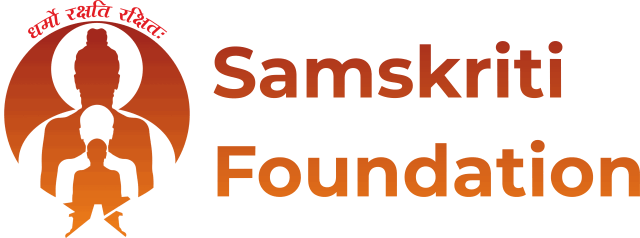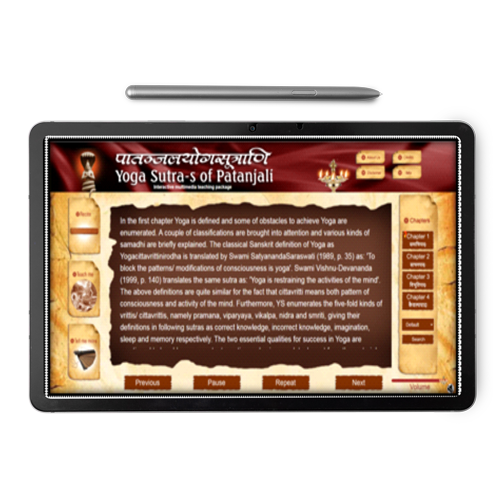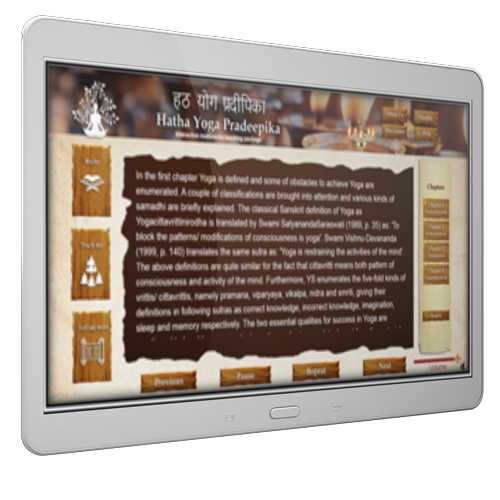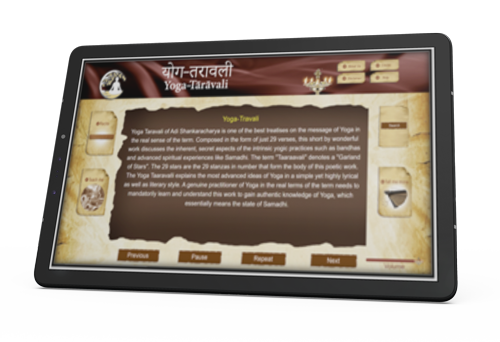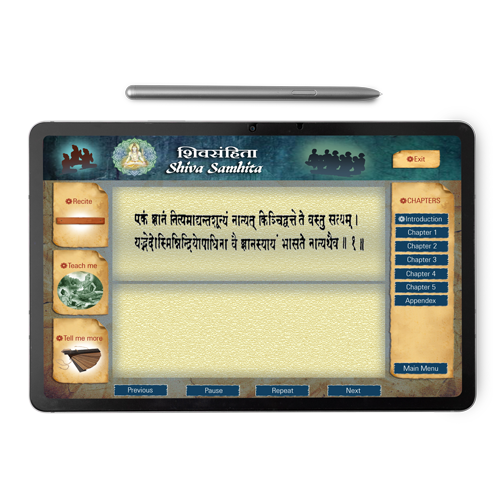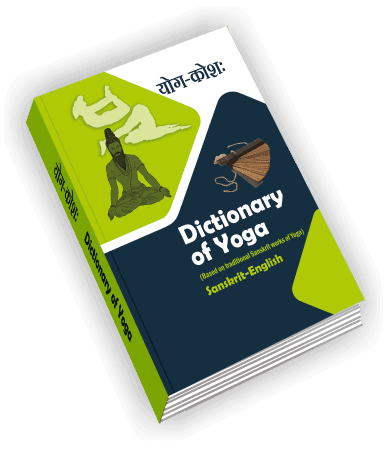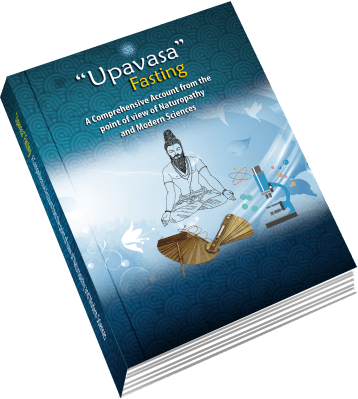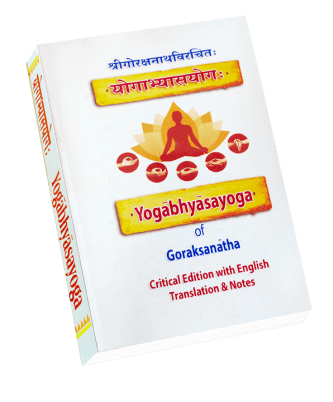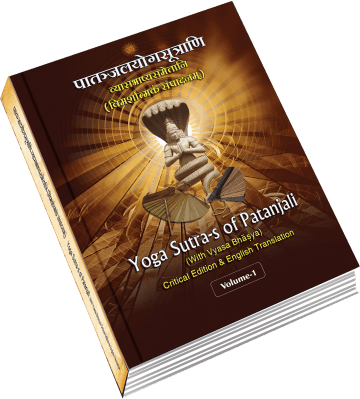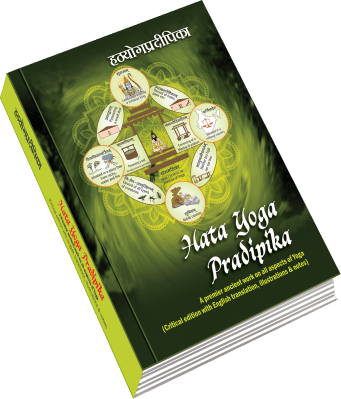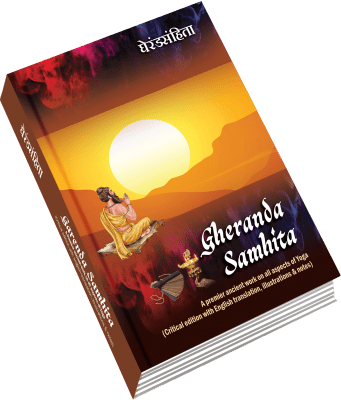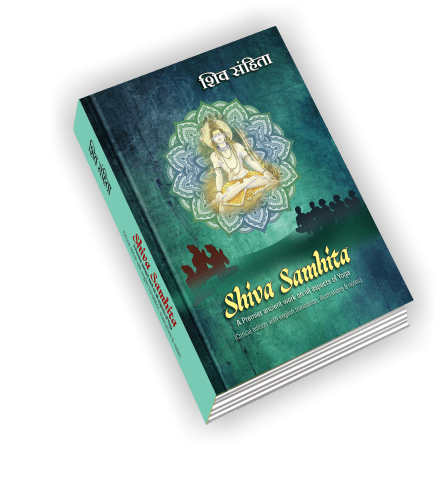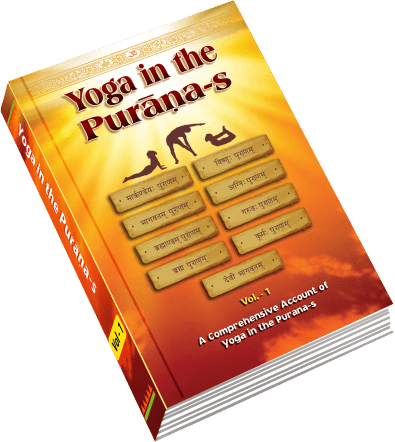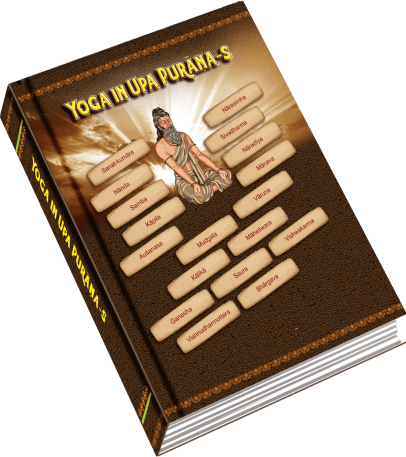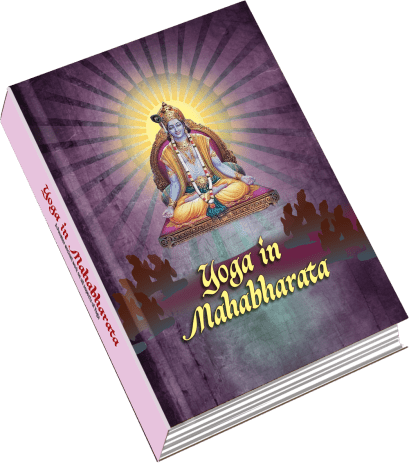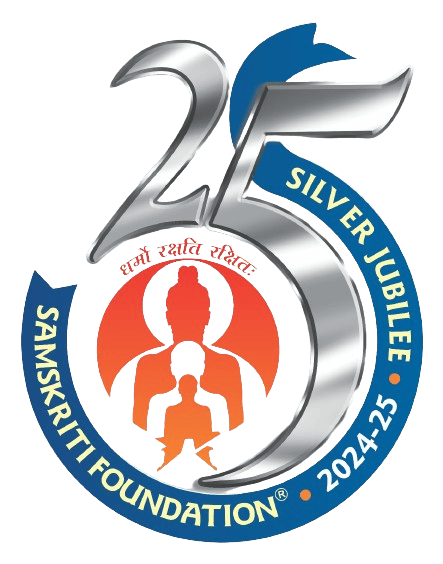I. Self-teaching Multimedia Programs
(Web-Apps and Mobile Apps)
In line with the developments of technology, Samskriti Foundation has developed Web-apps and Mobile apps (android) on the most important Sanskrit source works of Yoga that enable any person to chant, learn and teach these texts in a versatile and authentic manner, along with topic-wise and other searches at various levels. this titles developed so far are as follows:
Sage Patanjali’s Yoga Sutras • Hatha Yoga-Pradipika • Yogataravali • Gheranda Samhita
• Shiva Samhita with topic wise and other searches at various levels
These are Web-enabled and Mobile-enabled, Multimedia Self-teaching Programs with topic-wise and other searches at various levels, and various modes such as – ‘Recite’ mode; ‘Teache Me’ mode; ‘Tell Me More’ mode etc.
1. Yoga Sutra-s of Patanjali
The Yoga Sutras of Patanjali is a collection of Sanskrit sutras (aphorisms) on the theory and practice of Yoga, having 195 sutras.
These sutras was compiled in the early centuries CE, by the sage Patanjali in India who sythesized and organized knowledge about Yoga from much older traditions.
2. Hatha-Yoga Pradipika
The Hatha Yoga Pradipika (Light on Hatha Yoga), is a classic fifteenth-century Sanskrit manual on Hatha Yoga, written by Svatmarama, who connects the teachings’s lineage to Matsyendranath of the Nathas.
It is among the most influential surviving texts on Hatha Yoga.
3. Yoga Taravali
The Yoga Taravali is a seminal work on the exact spirit of Yoga and its pre-eminence. This is a short treatise containing just 28 Sloka-s (verses) that capture the essence of Yoga-Shastra in its original sense.
This text is authored by the great Adi Shankaracharya whose wonderful contribution to Yoga Shastra is documented in this treatise.
4. Gheranda Samhita
Gheranda Samhita (literally meaning “Gheranda’s collection”) is a Sanskrit text on Yoga. It is one of the three classic texts of Hatha Yoga (the other two being the Hatha Yoga Pradipika and the Shiva Samhita), and one of the most encyclopedic treatises in Yoga covering all aspects that is associated with the Yoga Shastra.
It contains more than 400 verses in about 7 chapters
5. Shiva Samhita
Shiva Samhita is a Sanskrit text on Yoga, written by an unknown author. The text is addressed by Lord Shiva to his consort Parvati.
The text consists of five chapters, with the first chapter a treatise that summarizes (Advaita Vedanta) while the remaining chapters discuss Yoga, the importance of a Guru (teacher) toa a student, various Asanas, Mudras and Siddhis (powers) attainable with Yoga and Tantra.
II. Fundamental Research (Indian Knowledge System)
Despite the widespread popularity of Yoga worldwide, there is a noticeable lack of comprehensive understanding when it comes to the theoretical foundations of Yoga among the general population.
This knowledge gap can be attributed to the limited presence of fundamental research in the field of Yoga, as well as the insufficient dissemination of such research through easily accessible publications.
To address this gap, the Samskriti Foundation has taken on the task of conducting essential research, resulting in the development of the publications
1. Dictionary of Yoga
(Based on traditional Sanskrit works of Yoga) Sanskrit-English
A comprehensive and easily graspable elucidation of the fundamental concepts of Yoga, extracted from the original Sanskrit source texts dedicated to the subject. This compilation encompasses approximately 5,000 pivotal Yoga-related terms, providing not only their origins and linguistic roots but also extensive citations referring back to the original source texts. The aim is to present these intricate concepts in a manner that is both genuine and readily understandable to a wide audience.
2. Upavasa- Fasting
A Comprehensive Account from the point of view of Naturopathy and Modern Sciences
This book uncovers the contemporary scientific significance of fasting, shedding light on its role in the modern world. It delves into the realm of experiments conducted in recent times, wherein fasting has been utilized as a method to address specific ailments like lifestyle-related and chronic diseases, while also contributing to metabolic regulation.
Furthermore, the book offers insights into the historical and cultural context of fasting. It explores the practices recommended in ancient texts like Dharmasastra, shedding light on the fasting practices of ancient Indian communities. The book also delves into references from various Purāņas, highlighting how fasting intertwines with a broader spectrum of austerities that guide aspirants on their path towards spiritual growth and evolution.
3. Yogabhyasayoga of Goraksanatha
Critical Edition with English Translation & Notes
This book, credited to Goraksanatha, recognized as the founder of Hathayoga, is affiliated with the Natha lineage of Indian Yoga, originating in the northern regions of India. “Yogabhyasayoga,” formerly an unpublished manuscript on handmade paper, has been meticulously edited and translated into English, complete with annotations and supplementary materials.
This work serves as a comprehensive compilation of Sanskrit verses, encompassing a wide range of topics within the Aṣṭānga-Yoga framework. Its primary focus is on elucidating the intricate facets of the Yogic path, providing aspiring spiritual practitioners with a detailed roadmap to achieve fulfillment.
4. Yoga Sutra-s of Patanjali (With Vyasa Bhasya)
Critical Edition with English Translation
The Yoga Sutras of Patanjali comprise a compilation of Sanskrit sutras, which are concise and profound aphorisms concerning the philosophy and application of yoga. This work consists of a total of 195 sutras.
Within this volume, a meticulous comparison of five distinct manuscripts—crafted on palm leaves and paper—of the Vyasa Bhāṣya commentary on Patanjali’s Yogasūtra has been conducted to identify variant readings. Consequently, a critical edition has been meticulously crafted.
Furthermore, this volume includes a clear and versatile English translation for both the Sutras and the Bhashya (commentary), rendering these intricate concepts accessible to a broader audience.
5. Hatha-Yoga-Pradipika
A premier ancient work on all aspects of Yoga (Critical edition with English translation, illustrations & notes)
The Hatha Yoga Pradipikā, also known as the “Light on Hatha Yoga,” stands as a timeless Sanskrit manual from the 15th century that delves into the realm of hatha yoga. Penned by Svātmārāma, these manual traces its teachings back to the lineage of Matsyendranath, a prominent figure among the Nathas.
This edition of the text has been meticulously prepared, including a thorough critical editing process and an English translation. Additionally, vibrant multi-color illustrations accompany the text, enhancing its visual clarity. The inclusion of notes and appendices further enriches the reader’s understanding of the material, ensuring that this publication presents a comprehensive and accessible resource for individuals interested in hatha yoga.
6. Gheranda Samhita
The Gheranda Samhita, signifying “Gheranda’s collection,” is a Sanskrit yoga text renowned for its comprehensive scope within the Yoga Shastra. It serves as one of the most encyclopedic treatises on yoga, encompassing all facets associated with the practice. Comprising over 400 verses distributed across approximately 7 chapters, this text offers a holistic perspective on yoga.
In this edition, the Gheranda Samhita has undergone meticulous critical editing, ensuring its accuracy and authenticity. Additionally, it has been thoughtfully translated into English, allowing broader access to its wisdom. Enhanced by vivid multi-color illustrations, the publication strives to provide visual clarity to the teachings. Accompanying notes and appendices further enrich the reading experience, making this version an invaluable resource for anyone interested in delving into the depths of yoga philosophy and practice.
7. Shiva Samhita
(A Premier ancient work on all aspects of Yoga) Critical edition with English translation, illustrations & notes
The Shiva Samhita, a Sanskrit yoga text, authored by an anonymous writer, stands as a profound work within the realm of yoga philosophy. Addressed by Lord Shiva to his partner Parvati, this text encompasses a wealth of teachings. While the initial chapter serves as an exception, the subsequent chapters delve into topics such as yoga practice, the pivotal role of a guru in guiding a student, diverse asanas (postures), mudras (gestures), and the siddhis (attainable powers) linked with both yoga and tantra.
This edition of the Shiva Samhita has undergone rigorous critical editing to ensure its accuracy and authenticity. Furthermore, the text has been thoughtfully translated into English, making its teachings accessible to a broader audience. Illustrated with vibrant multi-color depictions, the visual aids enhance comprehension. Additionally, accompanying notes and appendices contribute to a comprehensive understanding of the text’s nuances. This rendition serves as a valuable resource for individuals seeking insights into the profound wisdom contained within the Shiva Samhita.
III. Literary Research
Though Yoga has become extremly popular all over the world, the extent and extant of the original Sanskrit literature to which yoga owes its allegiance is almost unknown to the masses. This is due to the abscence of knowledge of the different Sanskrit texts that deal with Yoga. To address this void, Samskriti Foundation has undertaken in-depth literary research into various encyclopedic source works of Vedic and classical Sanskrit, which has resulted in the following publications.
1. An Overview of the Yoga-Upanishads and their Contribution to Yoga
The Yoga Upaniṣads consist of a collection of approximately twenty lesser-known Upaniṣads that focus specifically on the philosophy and practice of Yoga. These Upaniṣads delve into various aspects of methodology, meditation, and philosophical concepts. This work elucidates their philosophical perspectives on specific topics such as the world, the Atman, and other aspects, while also providing a comparative analysis with other streams of knowledge found in the Upaniṣads. By offering this valuable insight, it guides aspirants on the path towards fulfillment and spiritual growth.
2. Yoga in the Purana-s Vol 1
A Comprehensive Account of yoga in the Purana-s
Pataῆjali’s Yogasūtra is widely regarded as the foundational text of the Yoga school of thought. However, there are numerous other Indian texts that have delved into various aspects of yoga, including breathing techniques, sensory control, physical exercises, meditation, mind concentration, salvation, and attaining union with the Supreme Brahman.
This comprehensive work of volume 1 explores the philosophy of yoga as described in nine different Puranas. The first volume draws information from Puranas such as ŚrīmadbhāgavataPurāṇa, Agni Purāṇa, ViṣṇuPurāṇa, MārkaṇḍeyaPurāṇa, GaruḍaPurāṇa, Padma Purāṇa, BrahmavaivartaPurāṇa, BrahmāṇḍaPurāṇa, and Brahma Purāṇa.
3. Yoga in the Purana-s Vol 2
A Comprehensive Account of Yoga in the Purana-s
Pataῆjali’s Yogasūtra is widely regarded as the foundational text of the Yoga school of thought. However, there are numerous other Indian texts that have delved into various aspects of yoga, including breathing techniques, sensory control, physical exercises, meditation, mind concentration, salvation, and attaining union with the Supreme Brahman.
This comprehensive work of Volume 2 explores the philosophy of yoga. The second volume covers the remaining Puranas. Additionally, texts such as Yoga Upaniṣads and YogasūtraBhāṣya by Vedavyāsa, as well as Vedānta texts like Brahmasūtra and Bhagavadgīta, are referred to for comparative analysis and study.
4. Yoga in Upa Purana-s
The Upapuranas (Sanskrit: Upapurana) are a genre of Bharatiya religious texts consisting of many compilations differentiated from the Mahapuranas by styling them as secondary Puranas using the prefix Upa (secondary).
Though only a few of these compilations originated earlier than most of the extant Mahapuranas, some of these texts are extensive and important. But, unlike the case of the Mahapuranas, the different lists of eighteen Upapuranas seldom agree with one another with regard to the names of these texts. However, the most authentic Upa-Purana-s have been taken up for study in the current context.
The concept of Yoga, along with its principles and practical aspects find mention in every text associated with the traditional, Sanskrit-based Indian knowledge systems. The Upa-Purana-s are no exception in this regard. This book summarizes the common and unique aspects of Yoga found in the most important and authentic Upa-purana-s.
5. Yoga in Mahabharata
The Mahabharata holds the distinction of being one of the largest encyclopedic texts ever authored, encompassing an immense range of topics related to the Indian tradition. Within its vast expanse, the philosophy of yoga finds extensive and authentic delineation.
This particular Volume delves into the information available within the Mahabharata regarding the philosophy of yoga, providing a comprehensive exploration of this subject matter.
